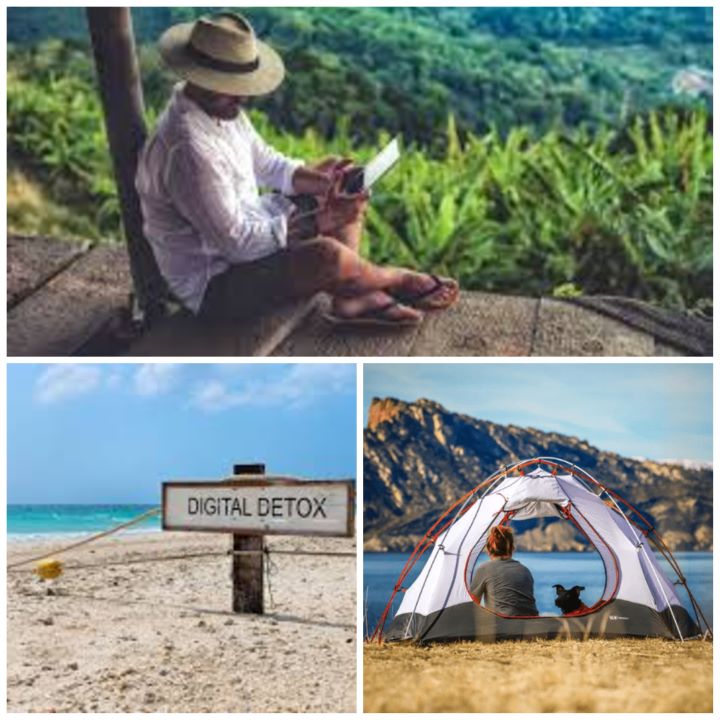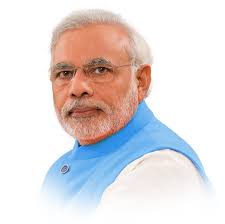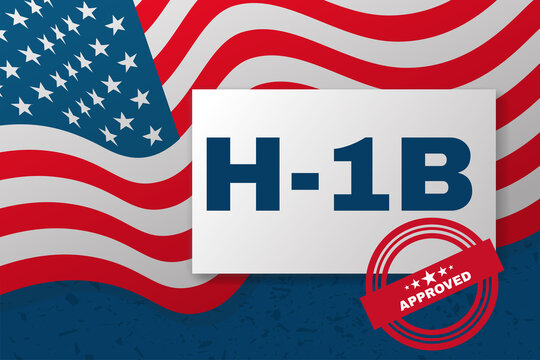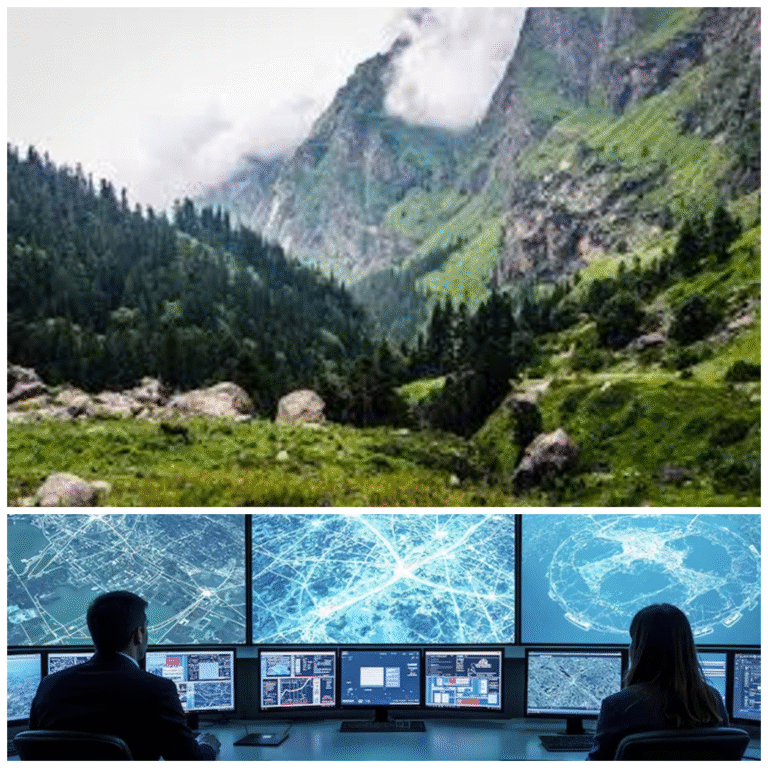
The scene is almost jarring: A $2,000-a-night luxury safari lodge in Botswana. Guests aren’t frantically Instagramming the elephants at the watering hole. Instead, they’re present, binoculars raised, journals open. Why? They signed a waiver agreeing to surrender their smartphones upon arrival. This isn’t punishment; it’s the pinnacle of the exploding “Digital Detox Tourism” trend, where travelers actively pay more to disconnect completely.
Once a niche offering for the wellness-obsessed, “No Wi-Fi” packages are now a strategic pillar for resorts, cruise lines, and adventure operators globally. This isn’t just about weak signals; it’s a deliberate, marketed absence. Let’s unpack why this counterintuitive concept is booming and the complex conversations it ignites.
Beyond the Spa: The Rise of Mandatory Disconnection
The concept of unplugging isn’t new. Yoga retreats have long encouraged device-free zones. What is revolutionary is the mainstreaming and monetization of enforced disconnection by major players:
- Luxury Redefined (Six Senses, Soneva): Pioneers like Six Senses and Soneva Resorts embedded “digital detox” into their core identity. Soneva’s “No News, No Shoes” philosophy includes in-room phone lockboxes and limited, communal internet zones deliberately designed to be inconvenient. Their “Silence” packages often command premium rates. Guests aren’t just paying for a bed; they’re paying for the guarantee of disconnection.
- The Science Pitch: Resorts explicitly cite research on tech’s impact on stress (elevated cortisol), sleep disruption (blue light), and reduced attention spans. They position disconnection not as deprivation, but as “cognitive restoration” – a core component of modern luxury wellness.
- Adventure Operators Go Off-Grid (Intrepid Travel, Black Tomato): Companies specializing in remote expeditions are leveraging their inherent lack of connectivity. Intrepid Travel actively markets trips to places like the Svalbard archipelago (Arctic) or the Omo Valley (Ethiopia) with the tagline: “Where connectivity ends, connection begins.” Black Tomato’s wildly popular “Blink” trips whisk travelers to secret, completely offline locations with zero advance details, forcing presence. The selling point? Radical immersion.
- Cruises Sailing into Silence (Hurtigruten, Viking): Even cruise lines, traditionally floating entertainment hubs, are carving out digital detox niches. Hurtigruten’s expedition cruises in Antarctica or Greenland emphasize the raw, unmediated experience. Viking offers “Digital Detox Lounges” on some river cruises – serene, tech-free spaces encouraging reading, conversation, and scenery gazing, subtly implying the rest of the ship might be better enjoyed offline too.
- The Budget-Conscious Detox (Cedar Pass Lodge, US National Parks): It’s not just high-end. Cabins in US National Parks (like Cedar Pass Lodge in Badlands NP) often have no cellular service and limited, paid Wi-Fi only in communal areas. This inherent limitation is now being reframed in marketing as a feature, not a flaw: “Reconnect with nature, disconnect from noise.” Campgrounds are following suit, advertising “low-connectivity zones.”
Why Pay More to Have Less? The Psychology of the Digital Detox Traveler
What drives someone to seek out, and pay for, enforced disconnection?
- Cognitive Overload & Burnout: The constant pinging, scrolling, and multitasking take a measurable toll. Travelers cite “decision fatigue” from daily digital life and seek environments where choices are simplified (what to eat, where to hike, when to rest).
- The Fear of Missing Out (FOMO) vs. The Joy of Missing Out (JOMO): A deliberate shift. Detox travelers actively seek JOMO – the relief of being free from the anxiety of the online world, emails, and social comparisons. They want to miss the digital noise.
- Craving Authentic Connection: The irony is palpable. Disconnecting digitally is seen as the path to reconnecting humanly – with travel companions, locals, and the environment. Deep conversations replace distracted scrolling.
- Presence as the Ultimate Luxury: In an age of constant distraction, the ability to be fully immersed in a breathtaking landscape or a cultural moment, without the urge to document it immediately, feels increasingly rare and valuable.
- Breaking Addiction Cycles: Many acknowledge a problematic relationship with their devices. A structured, supported detox in a beautiful setting acts as a “reset button” for digital habits.
The Sparking Debate: Liberation or Limitation?
The rise of digital detox tourism isn’t without controversy:
- The Privilege Paradox: Critics argue that the ability to choose disconnection is a luxury in itself. For many, constant connectivity is essential for work, family care, or managing businesses. Framing disconnection as an aspirational, paid-for experience highlights a socio-economic divide. Is it empowering or elitist?
- Safety & Accessibility Concerns: Is enforced disconnection safe, especially for solo travelers or in remote areas? Operators counter with robust safety protocols (satellite phones for guides, staff available 24/7). However, the tension between perceived risk and the desire for pure escape remains. Additionally, what about travelers who need connectivity for medical devices or accessibility tools?
- “Forced” vs. “Empowered” Disconnection: Is locking away a phone truly fostering mindfulness, or is it just another form of external control? Does it address the root causes of digital dependency, or simply offer a temporary escape? Some psychologists argue sustainable change requires building internal discipline, not just relying on external enforcement.
- The Industry’s Responsibility: Are travel companies genuinely promoting well-being, or are they capitalizing on a growing anxiety? Is marketing the absence of a basic modern utility (like Wi-Fi) as a premium feature ethical, especially when genuine remoteness naturally limits connectivity anyway?
- The Re-entry Problem: What happens when the detox ends? Travelers often report a jarring, sometimes negative, return to the connected world. Does the experience create lasting change, or just a brief respite followed by a rebound into digital overload?
The Future: Integration, Not Just Elimination
The trend isn’t fading; it’s evolving. The future of digital detox tourism likely lies less in absolute abstinence and more in intentional design:
- Tech-Curious Detoxes: Programs incorporating workshops on digital mindfulness – teaching skills to manage tech use after the trip ends. Think journaling techniques, app blockers, and notification management training alongside yoga.
- “Slow Tech” Spaces: Resorts offering beautiful, dedicated spaces for connectivity (high-speed, comfortable) for limited periods, making the rest of the environment deliberately device-discouraging, promoting mindful usage rather than total ban.
- Generational Shifts: As Gen Z (digital natives) gains travel spending power, their detox needs might differ. They might seek spaces optimized for small-group connection via private chats instead of public feeds, rather than total disconnection.
- Blending with Other Trends: Expect more overlap with silent retreats, analog travel (film cameras, paper maps), and regenerative tourism focused on deep environmental connection.
Digital Detox Tourism is more than a passing fad; it’s a visceral reaction to the overwhelming saturation of digital life. Travel companies are astutely recognizing that in our hyper-connected age, true luxury and profound experience often lie in the ability to disconnect completely and without guilt. While debates about accessibility, ethics, and long-term impact continue, the demand for spaces where the only notifications come from nature is undeniable. The “No Wi-Fi” sign is no longer a warning; for a growing number of weary travelers, it’s a welcome invitation to finally breathe.
Is the ultimate luxury in 2025 simply the freedom to be offline? The travel industry, and travelers voting with their wallets, increasingly seem to think so.



